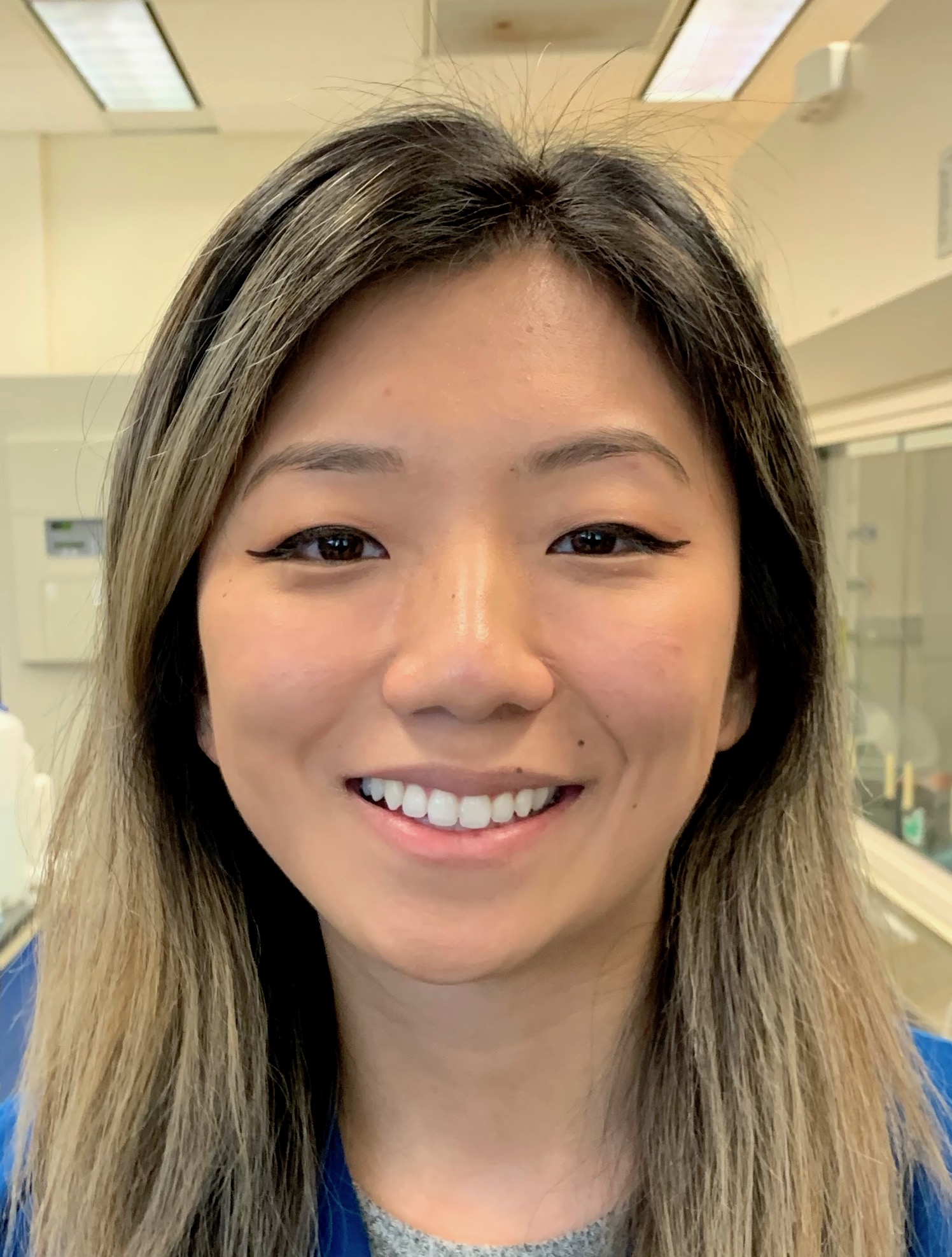News
-
12 2020
Journal of Investigative Dermatology published our collaborative work on Ovol1 regulating skin inflammation spearheaded by the Dai labScott Atwood
 Psoriasis is a common inflammatory skin disease characterized by aberrant inflammation and epidermal hyperplasia. Molecular mechanisms that regulate psoriasis-like skin
inflammation remain to be fully understood. Here we show that the expression of Ovol1 (encoding Ovo-like 1 transcription factor) is upregulated in psoriatic skin, and its deletion results in aggravated psoriasis-like skin symptoms following stimulation
with imiquimod (IMQ). Using bulk and single-cell RNA-sequencing, we identify molecular changes in the epidermal, fibroblast and immune cells of Ovol1-deficient skin that reflect altered course of epidermal differentiation and enhanced inflammatory
responses. Furthermore, we provide evidence for excessive full-length IL-1α signaling in the microenvironment of IMQ-treated Ovol1-deficient skin that functionally contributes to immune cell infiltration and epidermal hyperplasia. Collectively,
our study uncovers a protective role for Ovol1 in curtailing psoriasis-like inflammation and the associated skin pathology.
Read More PDF
Psoriasis is a common inflammatory skin disease characterized by aberrant inflammation and epidermal hyperplasia. Molecular mechanisms that regulate psoriasis-like skin
inflammation remain to be fully understood. Here we show that the expression of Ovol1 (encoding Ovo-like 1 transcription factor) is upregulated in psoriatic skin, and its deletion results in aggravated psoriasis-like skin symptoms following stimulation
with imiquimod (IMQ). Using bulk and single-cell RNA-sequencing, we identify molecular changes in the epidermal, fibroblast and immune cells of Ovol1-deficient skin that reflect altered course of epidermal differentiation and enhanced inflammatory
responses. Furthermore, we provide evidence for excessive full-length IL-1α signaling in the microenvironment of IMQ-treated Ovol1-deficient skin that functionally contributes to immune cell infiltration and epidermal hyperplasia. Collectively,
our study uncovers a protective role for Ovol1 in curtailing psoriasis-like inflammation and the associated skin pathology.
Read More PDF
-
10 2020
Cancers published our work on checkpoint immunotherapy in basal cell carcinoma and melanoma Scott Atwood
 The advent of immune checkpoint therapy for metastatic skin cancer has greatly improved patient survival. However, most skin cancer patients are refractory
to checkpoint therapy, and furthermore the intra-immune cell signaling driving response to checkpoint therapy remains uncharacterized. When comparing the immune transcriptome in the tumor microenvironment of melanoma and basal cell carcinoma
(BCC), we found that the presence of memory B cells and macrophages negatively correlate in both cancers when stratifying patients by response, with memory B cells more present in responders. Moreover, inhibitory immune signaling mostly decreases
in melanoma responders and increases in BCC responders. We further explored the relationships between macrophages, B cells and response to checkpoint therapy by developing a stochastic differential equation model which qualitatively agrees with
the data analysis. Our model predicts BCC to be more refractory to checkpoint therapy than melanoma and predict the best qualitative ratio of memory B cells and macrophages for successful treatment.
Read More PDF bioRxiv
The advent of immune checkpoint therapy for metastatic skin cancer has greatly improved patient survival. However, most skin cancer patients are refractory
to checkpoint therapy, and furthermore the intra-immune cell signaling driving response to checkpoint therapy remains uncharacterized. When comparing the immune transcriptome in the tumor microenvironment of melanoma and basal cell carcinoma
(BCC), we found that the presence of memory B cells and macrophages negatively correlate in both cancers when stratifying patients by response, with memory B cells more present in responders. Moreover, inhibitory immune signaling mostly decreases
in melanoma responders and increases in BCC responders. We further explored the relationships between macrophages, B cells and response to checkpoint therapy by developing a stochastic differential equation model which qualitatively agrees with
the data analysis. Our model predicts BCC to be more refractory to checkpoint therapy than melanoma and predict the best qualitative ratio of memory B cells and macrophages for successful treatment.
Read More PDF bioRxiv
-
10 2020
Nature Communications published our collaborative work on AP-1 and TGFB driving drug-resistant basal cell carcinoma spearheaded by the Oro labScott Atwood
 Tumor heterogeneity and lack of knowledge about resistant cell states remain a barrier to targeted cancer therapies. Basal cell carcinomas (BCCs) depend on
Hedgehog (Hh)/Gli signaling, but can develop mechanisms of Smoothened (SMO) inhibitor resistance. We previously identified a nuclear myocardin-related transcription factor (nMRTF) resistance pathway that amplifies noncanonical Gli1 activity, but
characteristics and drivers of the nMRTF cell state remain unknown. Here, we use single cell RNA-sequencing of patient tumors to identify three prognostic surface markers (LYPD3, TACSTD2, and LY6D) which correlate with nMRTF and resistance to
SMO inhibitors. The nMRTF cell state resembles transit-amplifying cells of the hair follicle matrix, with AP-1 and TGFß cooperativity driving nMRTF activation. JNK/AP-1 signaling commissions chromatin accessibility and Smad3 DNA binding leading to a
transcriptional program of RhoGEFs that facilitate nMRTF activity. Importantly, small molecule AP-1 inhibitors selectively target LYPD3+/TACSTD2+/ LY6D+ nMRTF human BCCs ex vivo, opening an avenue for improving combinatorial therapies.
Read More PDF
Tumor heterogeneity and lack of knowledge about resistant cell states remain a barrier to targeted cancer therapies. Basal cell carcinomas (BCCs) depend on
Hedgehog (Hh)/Gli signaling, but can develop mechanisms of Smoothened (SMO) inhibitor resistance. We previously identified a nuclear myocardin-related transcription factor (nMRTF) resistance pathway that amplifies noncanonical Gli1 activity, but
characteristics and drivers of the nMRTF cell state remain unknown. Here, we use single cell RNA-sequencing of patient tumors to identify three prognostic surface markers (LYPD3, TACSTD2, and LY6D) which correlate with nMRTF and resistance to
SMO inhibitors. The nMRTF cell state resembles transit-amplifying cells of the hair follicle matrix, with AP-1 and TGFß cooperativity driving nMRTF activation. JNK/AP-1 signaling commissions chromatin accessibility and Smad3 DNA binding leading to a
transcriptional program of RhoGEFs that facilitate nMRTF activity. Importantly, small molecule AP-1 inhibitors selectively target LYPD3+/TACSTD2+/ LY6D+ nMRTF human BCCs ex vivo, opening an avenue for improving combinatorial therapies.
Read More PDF
-
8 2020
Nature Communications published our work on stem cell heterogeneity in human epidermisScott Atwood
 How stem cells give rise to epidermis is unclear despite the crucial role the epidermis plays in barrier and appendage formation. Here we use single cell-RNA sequencing
to interrogate basal stem cell heterogeneity of human interfollicular epidermis and find four spatially distinct stem cell populations at the top and bottom of rete ridges and transitional positions between the basal and suprabasal epidermal layers.
Cell-cell communication modeling suggest that basal cell populations serve as crucial signaling hubs to maintain epidermal communication. Combining pseudotime, RNA velocity, and cellular entropy analyses point to a hierarchical differentiation
lineage supporting multi-stem cell interfollicular epidermal homeostasis models and suggest that transitional basal stem cells are stable states essential for proper stratification. Finally, alterations in differentially expressed transitional
basal stem cell genes result in severe thinning of human skin equivalents, validating their essential role in epidermal homeostasis and reinforcing the critical nature of basal stem cell heterogeneity.
Read More PDF bioRxiv
How stem cells give rise to epidermis is unclear despite the crucial role the epidermis plays in barrier and appendage formation. Here we use single cell-RNA sequencing
to interrogate basal stem cell heterogeneity of human interfollicular epidermis and find four spatially distinct stem cell populations at the top and bottom of rete ridges and transitional positions between the basal and suprabasal epidermal layers.
Cell-cell communication modeling suggest that basal cell populations serve as crucial signaling hubs to maintain epidermal communication. Combining pseudotime, RNA velocity, and cellular entropy analyses point to a hierarchical differentiation
lineage supporting multi-stem cell interfollicular epidermal homeostasis models and suggest that transitional basal stem cells are stable states essential for proper stratification. Finally, alterations in differentially expressed transitional
basal stem cell genes result in severe thinning of human skin equivalents, validating their essential role in epidermal homeostasis and reinforcing the critical nature of basal stem cell heterogeneity.
Read More PDF bioRxiv
-
7 2020
Grace and Qua have been awarded the UROP fellowship! And Jerald and Qua have been awarded the SURP fellowship! Congratulations! Scott Atwood
Two talented undergraduates were awarded the Undergraduate Research Opportunities Program (UROP) fellowship for the 2020-2021 academic year, while another two were awarded the Summer Undergraduate Research Program (SURP) fellowship at UC Irvine.
The mission of UROP is to integrate undergraduate students into the research culture of the University by providing opportunities for faculty and students to work together on research and creative projects. UROP helps support both the research mission of the University and its educational programs while promoting an undergraduate research culture at UCI. The program fosters collaboration between students, faculty, corporate entities and government agencies to prepare the undergraduate researcher for the challenges of tomorrow. By providing professional environments conducive to research advancement and career skills development, UROP provides students with unique opportunities to develop a wide variety of skills that will be useful in any future career or educational plans. By engaging students in research and creative opportunities, the program hopes to inspire in them a life-long passion for discovery and inquiry-based learning.
SURP provides funding for UCI undergraduates from all disciplines who are conducting summer research projects or creative activities under the guidance of UCI faculty members. The program offers students the opportunity to become immersed in a research topic for a full-time ten-week period, or the equivalent of 400 hours.
-
1 2020
Lilian Wang has joined the lab! Scott Atwood
 Lilian, an excellent master's student from the Biotechnology Management program, has decided to pursue her master's work in the lab. Lilian
received her B.S. in Molecuar, Cell, and Developmental Biology from UC Santa Cruz where she studied chromatin remodeling in S. cerevisiae. She went on to a Research Associate position at Single Cell Technology Inc. where she worked on assay development
of antibody screening platforms. Lilian is excited to expand her interests by developing tools to study stem cell heterogeneity in human skin. Welcome to the lab!
Lilian, an excellent master's student from the Biotechnology Management program, has decided to pursue her master's work in the lab. Lilian
received her B.S. in Molecuar, Cell, and Developmental Biology from UC Santa Cruz where she studied chromatin remodeling in S. cerevisiae. She went on to a Research Associate position at Single Cell Technology Inc. where she worked on assay development
of antibody screening platforms. Lilian is excited to expand her interests by developing tools to study stem cell heterogeneity in human skin. Welcome to the lab!
- Previous Older posts